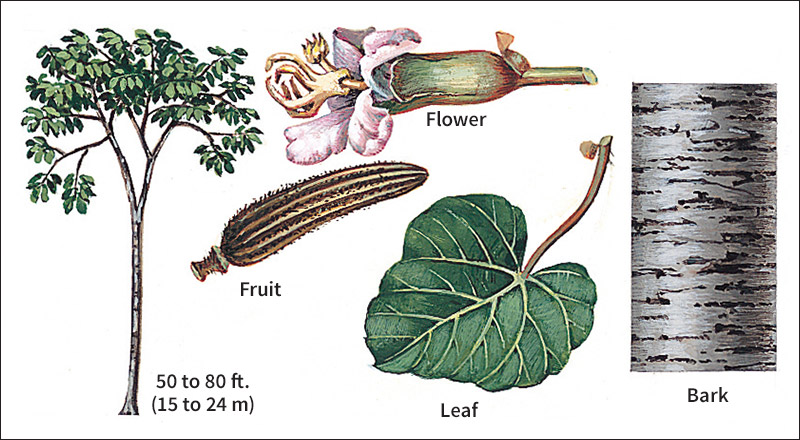Balsa, << BAWL suh or BAHL suh, >> is the lightest wood in commercial use. It comes from the balsa tree. Commercially traded, oven-dried balsa wood weighs from about 7 to 10 pounds per cubic foot (112 to 160 kilograms per cubic meter). The heavier kinds of balsa wood weigh as much as 20 pounds per cubic foot (320 kilograms per cubic meter). Balsa is light because air fills its large, hollow cells when the wood is dried out. The tree has large ivory-colored, vase-shaped flowers that produce its fruit and seeds.

Balsa gets its name from the Spanish word for raft. It was so named because the people of tropical countries have used the logs for rafts. Balsa grows from southern Mexico to northern Venezuela, and along the western coast of South America as far south as Bolivia. Large quantities of balsa are cut in Ecuador, the world’s largest producer, and Costa Rica. The tree is widely cultivated on plantations.
Balsa wood has a silky sheen and feel. It is white to cream-colored, with a pinkish tinge in the inner parts of the trunk. The wood is used in making model airplanes and some kinds of boats, truck bodies, life rafts, and buoys. It also has been used as an insulating material in incubators, and in refrigerator cars and trucks.
